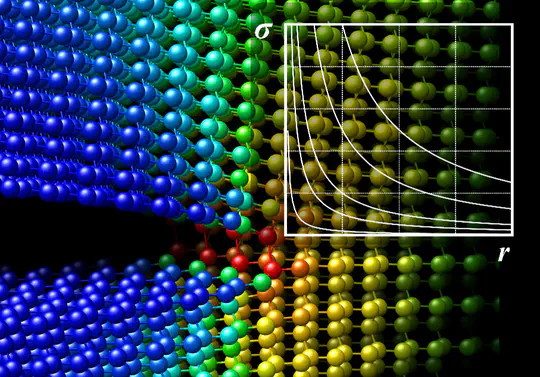Research Projects
- Research Interests:
Mechanics & Strength of Materials, Strain Engineering, Ferroelectric, Ferromagnetic, and Multiferroic Properties, Quantum Trasnport, Topological Matters. - Techniques:
First-principles density-functional theory (DFT) calculations, Molecular dynamics (MD) simulations, Phase-field (PF) modeling, Discrete dislocation dynamics (DDD), Finite element method (FEM), High-throughput calculations, Machine learning. - Materials:
Structural materials, Nanomaterials, Advanced functional materials including Ferroelectrics, Ferromagnetic materials, and Multiferroics, Quantum materials.
Toward Unbreakable Materials
Our research is aimed at understanding the fundamental mechanisms that why materials mechanically fail and how to create materials that do not break. By controlling light and electronic environments, we have discovered that brittle and fragile materials such as glass can behave like strong and tough metals.
Our research is aimed at understanding the fundamental mechanisms that why materials mechanically fail and how to create materials that do not break. By controlling light and electronic environments, we have discovered that brittle and fragile materials such as glass can behave like strong and tough metals.
Toward Quantum Devices as One Billionth of a Machine
Nano- and atomic-scale materials exhibit specific magnetic and ferroelectric properties and multiferroic functions that can interconvert mechanical, electrical and magnetic energy. The aim is to unravel this and create ’nano-quantum machines’, machines that can operate in the tiny world of ‘one hundred millionth of a billionth’.
Nano- and atomic-scale materials exhibit specific magnetic and ferroelectric properties and multiferroic functions that can interconvert mechanical, electrical and magnetic energy. The aim is to unravel this and create ’nano-quantum machines’, machines that can operate in the tiny world of ‘one hundred millionth of a billionth’.
Novel Functions for Next Generation Devices
As ’the 21st century is the age of quantum’, devices based on quantum technology, such as quantum computers, are being invented at an ever-increasing rate. We are conducting research on advanced quantum material functions that will pioneer innovative devices of the future that will cause such a paradigm shift.
As ’the 21st century is the age of quantum’, devices based on quantum technology, such as quantum computers, are being invented at an ever-increasing rate. We are conducting research on advanced quantum material functions that will pioneer innovative devices of the future that will cause such a paradigm shift.
Multiphysics & Functional Emergence
As human beings exhibit great power when under great pressure, materials also express potential functions when subjected to mechanical stress. We are challenging to develop new material functions by utilizing the mechanical load.
As human beings exhibit great power when under great pressure, materials also express potential functions when subjected to mechanical stress. We are challenging to develop new material functions by utilizing the mechanical load.
Fusion of Computational/Data Science to Unravel Material World
By solving physical laws and simulating the real world in a computer, we can reveal phenomena that cannot be seen/understood experimentally. In addition to state-of-the-art solid state physics theory and the development of proprietary materials analysis software, we are also integrating with data science such as machine learning.
By solving physical laws and simulating the real world in a computer, we can reveal phenomena that cannot be seen/understood experimentally. In addition to state-of-the-art solid state physics theory and the development of proprietary materials analysis software, we are also integrating with data science such as machine learning.
Our laboratory exclusively owns a large number of large scientific and technical parallel computing servers (3,000 Cores of Intel Xeon Processor in 100 Nodes with InfiniBand interconnections) and workstations. In addition, the laboratory owns microscopic shape and property measurement equipment such as an atomic force microscope.





